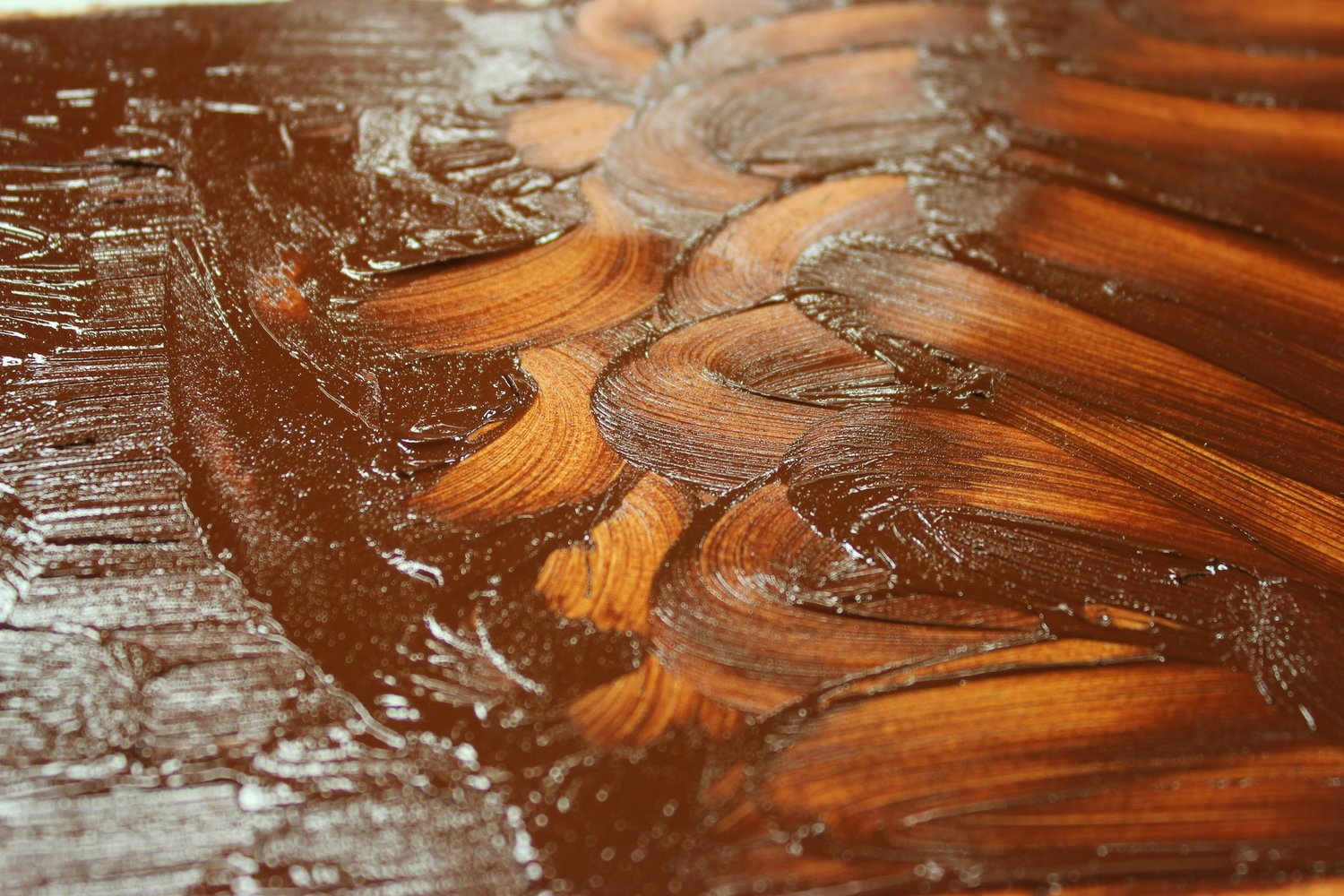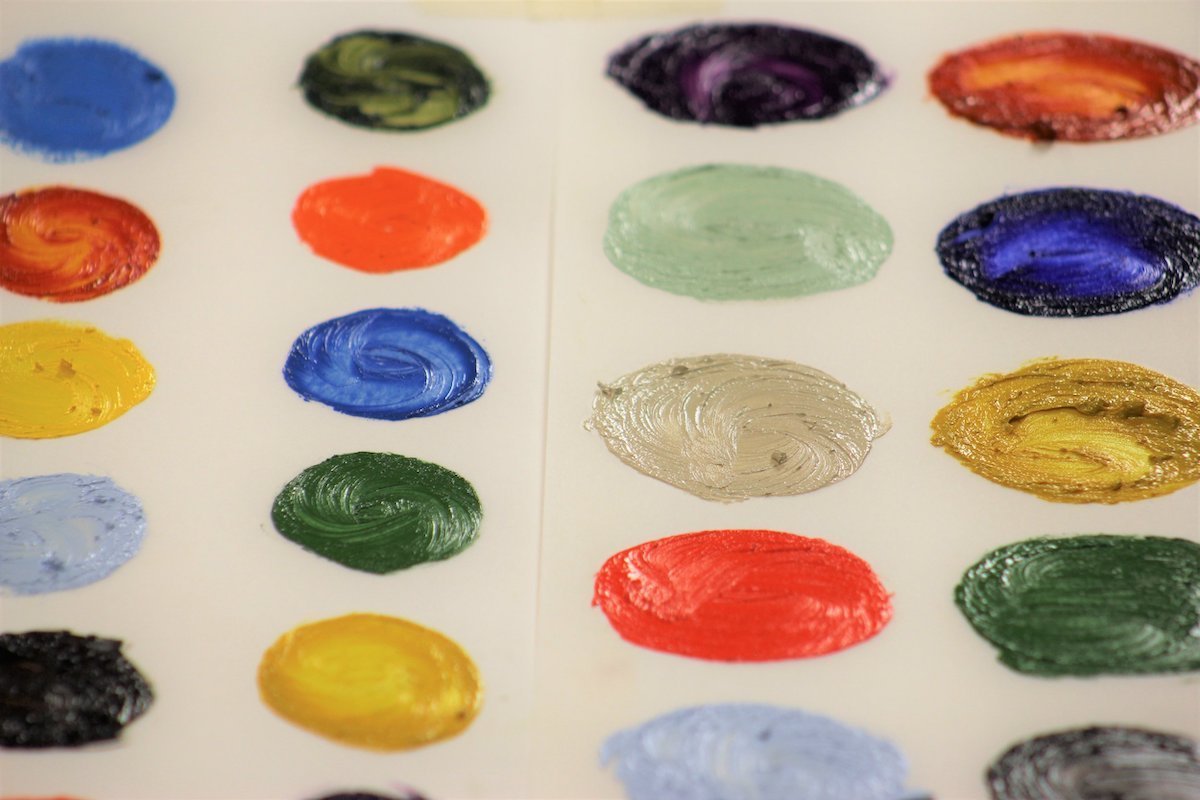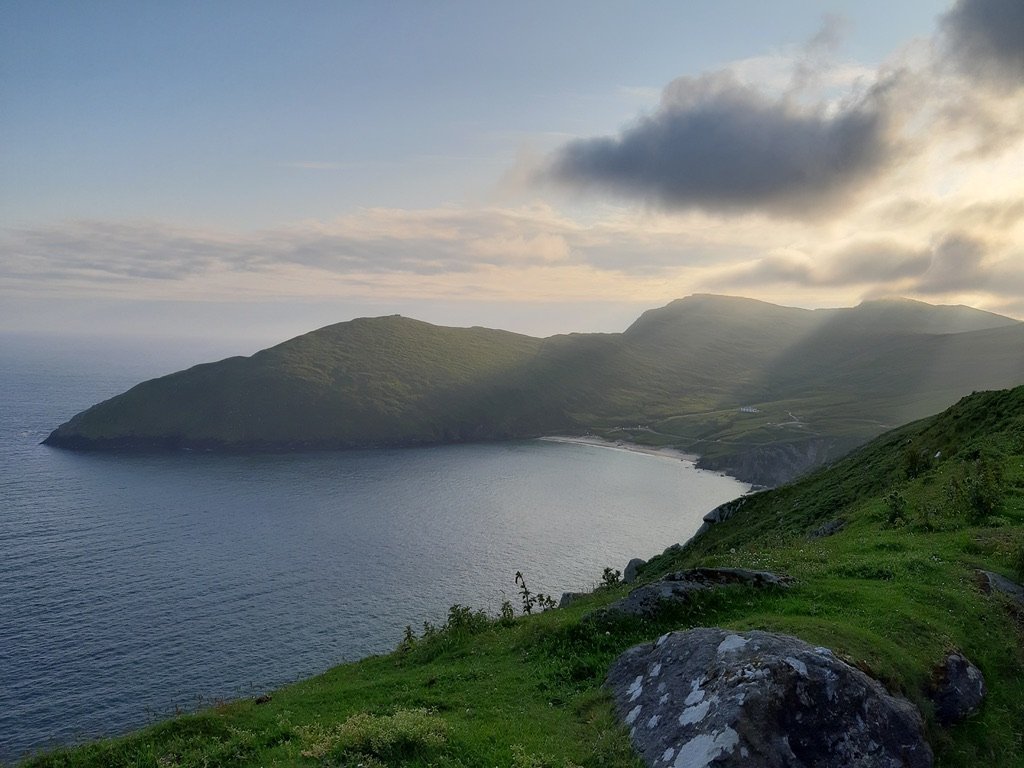
Ask Richard: Mars Pigments
We chatted with R&F founder Richard Frumess about Mars pigments and, more specifically, the Mars paints in R&F’s color line: Mars Yellow (Light and Deep), Mars Orange, Mars Red, Mars Violet, and Mars Black. These colors can often be overlooked in favor of their brighter, splashier neighbors, but the Mars family has a lot to offer the painter who prefers nuance.

Artist Spotlight: Miriam Hoffman
Miriam Hoffmann is a contemporary mixed-media portrait artist who lives and works in Atlanta, GA. She taught herself to paint in 2020 after taking an online course. We spoke with Miriam recently about how she works with R&F Pigment Sticks®, what her studio day looks like, and why she is drawn to portraiture.

Upcoming Workshops with R&F Instructors
We’ve highlighted an upcoming workshop from each of our R&F affiliated instructors. If none of these workshops are close to you, download our Teaching Artist list to find someone in your region. You can also access a range of tutorials on R&F’s YouTube channel or visit Articles & Links where you will find blog posts on popular subjects ranging from how to store Pigment Sticks® to encaustic color mixing.

Working On Paper With R&F Drawing Oils™
Many of you have written to inquire: can R&F Drawing Oils™ be used on paper? The quick answer is yes; you can use R&F Drawing Oils™ on paper. However, as we note in our literature, on our website, and on color set packaging, if an artist is concerned with the long-term archival stability of their artwork, we recommend preparing the surface with a size and gesso or choosing a paper specifically made for oil applications. If an artist is playing, sketching for their own enjoyment without concerns for long-term archival stability, then any paper or sketchbook will work just fine.

R&F Drawing Oils™: Your Top 5 Questions
R&F is pleased to introduce the newest addition to our paint line - R&F Drawing Oils™. Taking inspiration from our Pigment Sticks®, Drawing Oils™ offer a smooth & portable drawing experience with a harder formulation (less oil, more wax). We’ve received many questions about our Drawing Oils™, so we put together a blog post to address your top five questions.

Ask Richard: Complex Earths
We sat down with R&F founder Richard Frumess recently for another edition of Ask Richard, our segment where we pick his brain on color, paintmaking, and other esoteric art-related questions. In this illuminating conversation, we chatted about the 19 different colors in R&F’s paint lines that are categorized as Complex Earths.

Artist Spotlight: Andrea Carracedo
Andrea Carracedo was born in Comillas, in the northern coast of Spain, and currently based in Banyoles, Catalonia. Inspired by dramatic landscapes, colors and light, she paints encaustic artworks, often using a highly textured accretion technique. Andrea is a Core Artist Instructor for R&F Handmade Paints and a member of International Encaustic Artists. This year Andrea is hosting the first encaustic retreat in Spain, between Banyoles and Girona, Catalonia.

Artist Spotlight: Nicola Bennett
Originally from the UK, Nicola Bennett is based in the South Island of New Zealand. She draws inspiration from chefs and local farms to create paintings that celebrate the sensory intricacies of cooking with everyday ingredients. Nicola's formal training includes a BFA from Leeds in the UK and an MFA from Whitecliffe College of Arts and Design. We spoke with Nicola recently about the relationship between food and art, her favorite color, and painting intuitively.

2025 Featured Workshops with R&F Instructors
We’ve highlighted a 2025 workshop from each of our R&F affiliated instructors. If none of these workshops are close to you, download our Teaching Artist list to find someone in your region. You can also access a range of tutorials on R&F’s YouTube channel or visit Articles & Links where you will find blog posts on popular subjects ranging from how to store Pigment Sticks® to encaustic color mixing.

Pigment Sticks: Your Top 5 Questions
Here you will find answers to your top 5 burning questions on R&F Pigment Sticks®. From how to store your paint, to drying times, working with tube oil paint and Blending Medium, and whether you need to varnish, this post is packed with info.

Notes on Color: The Phthalos
We’re back with another edition of Notes On Color - our platform for sharing our thoughts on color. Meet Phthalo Blue, Phthalo Turquoise, and Phthalo Green. Don’t be fooled by their dark top tones. These colors pack a punch.

Artist Spotlight: Jenny Nelson
Jenny Nelson is a painter and arts educator. She has taught classes and workshops at Truro Center for the Arts, Provincetown Art Association and Museum, Woodstock School of Art, and the Nantucket Artists Association, among others. We spoke with Jenny recently about finding shapes, the role intuition plays in her work, and how she navigates challenges in the studio.

Brown Pink: Creating Your Own Artist Residency
At Brown Pink, artists can design their own residency taking advantage of the fully stocked studio; curated art collection; and spacious, thoughtfully arranged living quarters to book a week-long stay.

Artist Spotlight: Joanna Kidney
R&F Artist Instructor Joanna Kidney was born in Dublin and is based in County Wicklow, Ireland. Her practice considers the immensity and the mystery of being human. It is a web of interrelated ideas around consciousness, perception, temporality and holism. Through drawing, painting and installation, her work offers open, poetic prompts, and a contemplative space.

Artist Spotlight: Henry Curchod
We chatted recently with 2023 artist-in-residence Henry Curchod about his time at Brown Pink in August. He was honest about both the challenges and benefits of solitude, and of doing an artist residency. We found the conversation interesting and hope you do too.

Artist Spotlight: Kelly Milukas
Kelly Milukas began as a sculptor and expanded to work in a range of media including watercolor, photography, cast resin, pastel, and encaustic. Many of her projects include a focus on the intersection of creativity and science, such as her nationally exhibited “Keys to the Cures” series.

WORK IN PROGRESS: Pigment Stick® Drying Test
The number one question we get at R&F on the daily is - “How long do Pigment Sticks® take to dry?” We answer as best we can, pointing out that drying times are affected by a number of factors including: how thickly the paint is applied, the absorbency of the surface, the ambient temperature, exposure to light, and even the surrounding colors.

Lora Murphy On Painting With Fire + Essence Of Mulranny
Lora Murphy was born in Ireland and educated in Ireland, the United States, and Italy. Trained as an oil painter, she now works primarily in encaustic and mixed media, describing her inspiration as stemming from “what drives us, as human beings, and our consciousness.” Her work is infused with the connection she feels to her female ancestors and a desire to honor their struggle. It is often layered with symbolism that draws upon her studies in Jungian and archetypal psychology and alchemy.

Artist Spotlight: Mike Tapogna
This week we feature artist Mike Tapogna. Mike’s work is vibrant and driven by color. In his artist statement he describes his process as one of change and discovery. “Consciously or otherwise, I paint for a balance between subject and surface. Through addition, deletion and sometimes total destruction of the painted canvas, I am able to find new and unexpected possibilities.”

R&F Blending Medium: With and Without Drier
R&F Blending Medium is essentially Pigment Stick® without the pigment. It is ideal for glazing colors, can be worked directly into a color to increase the color's transparency, or used to blend colors together on the surface. R&F Blending Medium with Drier contains a small amount of Cobalt Manganese drier to speed up drying time. The use of a drier can affect color, so it is best used under a layer of Pigment Stick®.
Latest Posts
Brown Pink: Creating Your Own Artist Residency
Workshops with R&F Instructors: Winter into Spring 2024
Artist Spotlight: Joanna Kidney
Artist Spotlight: Henry Curchod
Artist Spotlight: Kelly Milukas
WORK IN PROGRESS: Pigment Stick® Drying Test
Lora Murphy on Painting With Fire & Essence of Mulranny
Artist Spotlight: Mike Tapogna
R&F Blending Medium: With and Without Drier
How To Pick A Palette with Julie Snidle
OZNZ: Encaustic in Australia and New Zealand
Artist Spotlight: Halim Flowers
Artist Spotlight: Julie Snidle
Notes On Color: Chromatic Tones
The 16th International Encaustic Conference
Artist Spotlight: Dale O. Roberts
Notes On Color: Translucent Color Set
R&F's 2023 Artists-In-Residence: Brad Ellis, Henry Curchod & Kuzana Ogg
Notes On Color: Brilliant Yellow Extra Pale, Cobalt Turquoise & Veronese Green
Meet The Team: Richard Frumess
Notes On Color: Mars Yellow Deep, Sepia & Warm Pink
R&F’s Opaque Color Set: Working From A Limited Palette
Meet The Team: Allison Carroll
Matt Kleberg: Extended Stay - A Unique Color Collaboration
Artist Spotlight: Kate Collyer
Meet The Team: Carina Quackenbush
Notes On Color: Blue Ochre, King’s Blue & Azure Blue
Meet The Team: Dietlind Vander Schaaf
Artist Spotlight: Lisa Pressman
From The Collection: Wayne Montecalvo
The Diptych Project: Transatlantic Fusion at the International Encaustic Conference
Color Mixing with Jeff Hirst, Jodi Reeb, & Lorraine Glessner
From The Collection: Laura Moriarty
International Workshops: Lyn Kirkland & Julie Ann Wrathall
Artist Spotlight: Sharon Paster
Artist Spotlight: Leslie Giuliani
Video, Virtual, & Online Workshops
Color Mixing with Debra Claffey & Susan Stover
International Workshops: Bettina Egli Sennhauser & Kunstfreiraum
Artist Spotlight: Margaret Ryall
Color Mixing with Julie Snidle and Dietlind Vander Schaaf
International Workshops: Janise Yntema & Zijdelings
The 15th International Encaustic Conference
2022 Multiday Workshops Open for Registration
2022 Mini Workshops Now Available
R&F Comprehensive Workshop in Glendale California
The Encaustic Painter’s Dozen: Chromium Oxide Green, Alizarin Orange & Ultramarine Blue Pale
Shading: Azure Blue, Turkey Red, Cadmium Yellow Deep
The Encaustic Painter’s Dozen: Cobalt Blue, Burnt Sienna & Turkey Umber Pale
Artist Spotlight: Stephanie Roberts-Camello
New Video: Pigment Stick® Painter’s Dozen 2
The Encaustic Painter’s Dozen: Unbleached Titanium, Manganese Violet & Indigo
R&F Pigment Stick® Techniques: Trace Monotype
The Encaustic Painter’s Dozen: Titanium White, Olive Yellow & Ancient Gold
Tips & Tricks: Smooth & "Bubble Free" Encaustic Surface
The Encaustic Painter’s Dozen: A Limited Edition Set
Tinting: Turkey Umber Pale, Indanthrone, Nickel Yellow
Virtual Demo: Drawing Between Layers
Tips & Tricks: Markmaking With R&F Pigment Sticks®
Selecting A White In The R&F Color Line
Virtual Demo: The Versatility of Pigment Sticks®
Artist Spotlight: Kelly Austin Rolo
Selecting A Black From The R&F Color Line
Virtual Demo: Encaustic Painting on Paper
From The Collection: Debra Claffey
An Inspiring Visit With Leslie Giuliani At Brown Pink
Can You Combine Pigment Sticks With Tube Oil Paint?
Toptone And Undertone: Part Two
Virtual Demo: Encaustic Monotypes With Caryl St. Ama
Encaustic: Polishing Paintings
R&F Encaustic At Penland School Of Craft With Guest Blogger Julie Snidle
Tools & Techniques: Taping Panels
Virtual Demo: Leslie Giuliani On Printmaking With Encausticflex
Tools & Techniques: R&F Blending Medium With Drier
Virtual Demo: Jeff Hirst On Working Large With Transparent & Opaque Encaustic Paint
How To Store Encaustic And Pigment Stick® Artwork
In Conversation With Caryl St. Ama
From The Collection: David A. Clark
Is R&F Blending Medium The Same As Cold Wax Medium?
Virtual Demo: Adding Lines To Encaustic Paintings With Julie Snidle
Color Names: Sap Green & Raw Sienna
Retailers, Teachers & International Workshops
Where Do Our Color Names Come From?
The International Encaustic Conference is VIRTUAL - Don’t Miss Out!
Connecting Artists: Wayne Montecalvo & Nanette Rae Freeman
Virtual Demo: Encaustic & Photo Collage with Jodi Reeb
R&F Abroad: Experimental Printmaking In Ireland
R&F Pigment Sticks®: Gloves & Barrier Creams
From The Collection: Elise Wagner
Encaustic: It’s All About Temperature
R&F’s Core Instructors: 2021 Workshops & Happenings
Tricks & Tips: R&F Pigment Sticks®
Demo Video: Transparency & Opacity
Encaustic: Palette Setup & Temperature
From The Collection: Diana González Gandolfi
Encaustic: Helpful Tips & Tricks
Articles & Links Webpage + Virtual Demos
Painting With Transparent Colors
Making Your Own Artist Residency
Artist Spotlight: Adrian Arleo & Deborah Kapoor
Demo Video: Encaustic Scraping
Painting With Iridescent Colors
Meet R&F’s Tier Artists: Debra Claffey, Lorraine Glessner, Shelley Jean, Sara Post, & Kelly Williams
Ask Richard: Drying Times for Pigment Sticks
Removing “Skin” From Pigment Sticks
From The Collection: Abby Goldstein
Meet R&F’s International Encaustic Conference Scholarship Recipients
Virtual Studio Visit: Lisa Pressman, Caryl St. Ama, Anne Hebebrand & Jenny Nelson
The 14th International Encaustic Conference + A Scholarship Giveaway
Encaustic: How To Store Your Paint
Demo Video: R&F Pigment Sticks®
R&F Pigment Sticks®: How To Store Your Paint
From The Collection: Marina Thompson
People & Places: Marybeth Rothman, Allison B. Cooke & Belen Millan
Ask Richard: Achromatic Blacks, Chromatic Blacks & Chromatic Whites
People & Places: Cecile Chong, Brad Ellis & Flo Bartell
From The Collection: Nancy Natale
Artist Spotlight: Melanie Hulse
R&F Core: Catalyst Art Lab & More
Encaustic & Sculpture: Pamela Blum, Anna Wagner-Ott, & Susan Stover
Artist Spotlight: Humberto Fernandez
Painting The Landscape: Regina B. Quinn & Cherie Mittenthal
Painting The Landscape: Thomas Sarrantonio & Janise Yntema
Demo Video: Working with Stencils
People & Places: Tracy Penn, Alteronce Gumby & Shelley Jean
From The Collection: Don Maynard
People & Places: Brenden Spivey, Victoria Foster Harrison & Bettina Egli Sennhauser
Student & Teacher Experience: Jenna Jerman
Encaustic Technique: Working With Ink
Artist Spotlight: Jane Allen Nodine
Encaustic Technique: Gluing Paper to Panel
From The Collection: Leigh Palmer
Demo Video: How To Clean A Brush
People & Places: Tracey Adams, Sarah Rehmer & Joanna Kidney
People & Places: Toby Sisson, Kelly Sheppard Murray & AJ Grossman
From The Collection: Joanne Mattera
Artist Spotlight: Pamela W. Wallace
Techniques & Tools: Leaf Stencils
Techniques & Tools: Encaustic Inlay
Artist Spotlight: Wayne Montecalvo
Artist Spotlight: Leslie Giuliani
Online Learning with Lisa Pressman
From The Collection: Kevin Frank
From The Collection: Richard Purdy
From The Collection: Cat Crotchett
From The Collection: Lisa Pressman
Learn + Connect: Upcoming Events
From The Collection: Carol Bajen-Gahm
From The Collection: Lynnette Haggard
The International Encaustic Conference + An R&F Exhibition
Upcoming R&F Core Artist Workshops
Unique Color: Cobalt Turquoise
From The Collection: Rifka Angel
